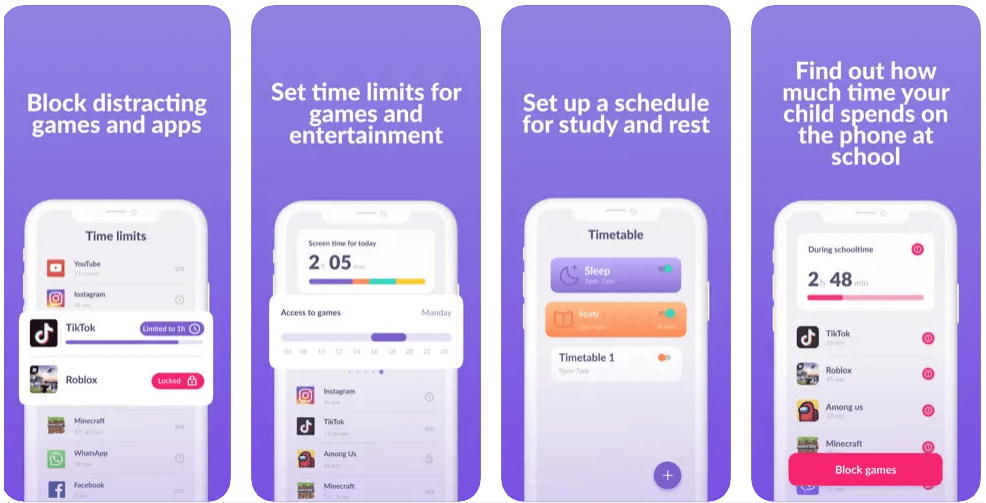Dealing with an Overstimulated Child: Practical Tips for Parents of Young Children
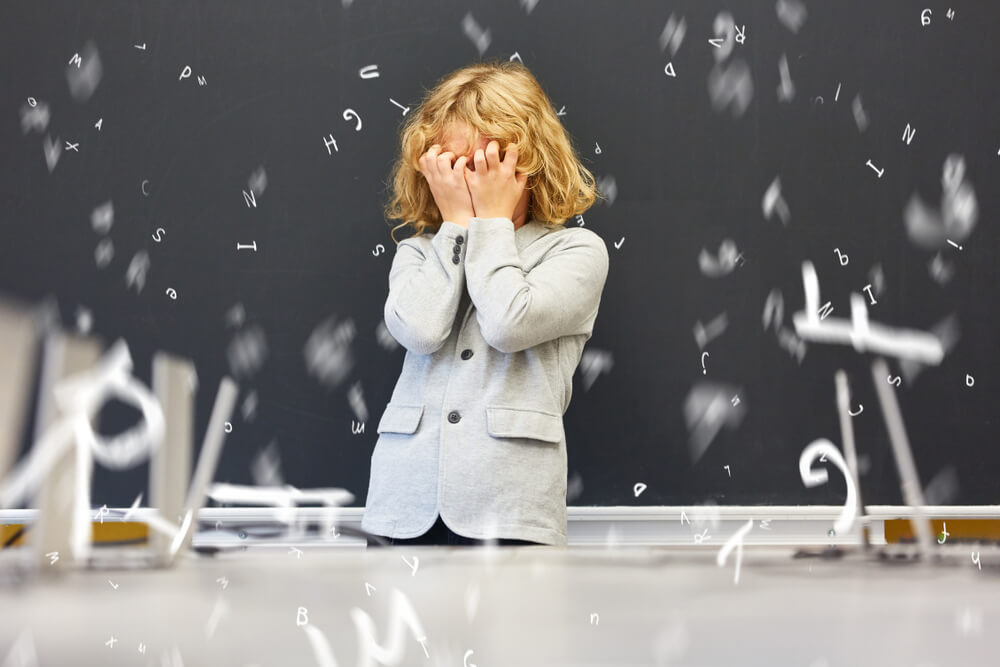
New or exciting experiences, noises, and sensations can easily make a child overstimulated. That leads to sensory overload, meaning they get overwhelmed, which compromises their ability to communicate with peers, learn, or feel at ease.
Here’s a detailed guide on overstimulation in children and how parents can better cope with it!
Contents:
- What Is Overstimulation?
- Why Does Overstimulation Happen?
- Signs of Overstimulation at Each Age
- How to Help or Calm Your Overstimulated Child
- How to Avoid Overstimulation? Tips for Parents
- When to Seek Help?
- FAQs
What Is Overstimulation?
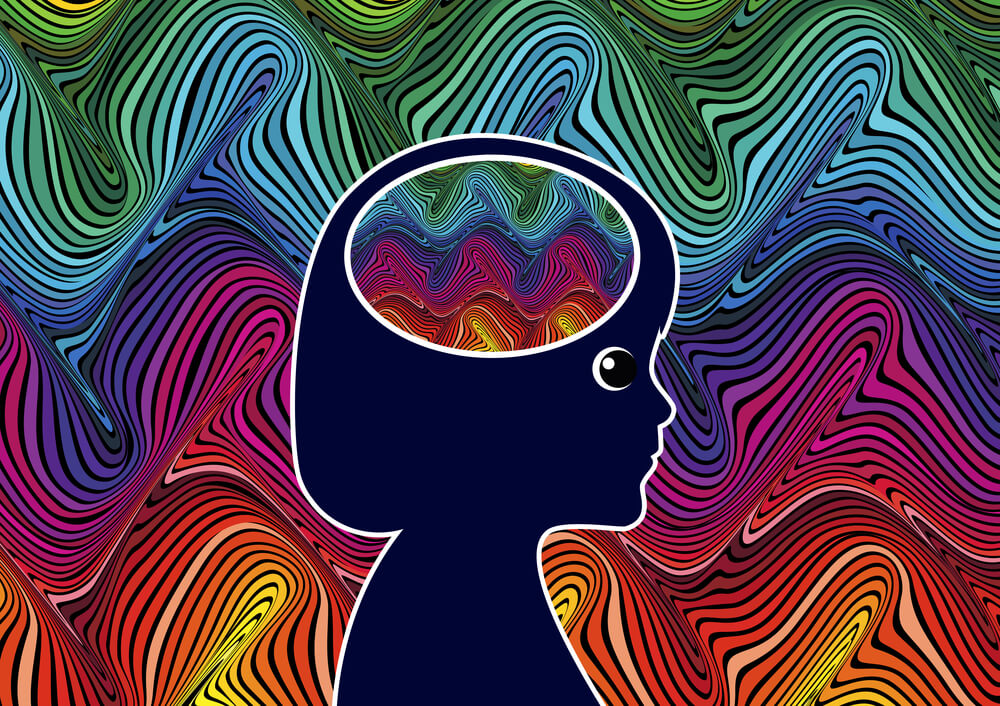
Sangoiri/Shutterstock.com
People interact with the environment all the time, and the settings lead to different stimuli. Activities we do with other people also stimulate our bodies. Overstimulation occurs when there are more stimuli than our body can handle.
The threshold for becoming overstimulated is different for each person and can vary depending on the location, activity, and other factors. However, the general rule is that overstimulating a baby is easier than an adult. Also, those dealing with anxiety, autism, or other medical conditions could be more susceptible to sensory overload.
Individuals might face different types of overstimulation. It could be auditory, visual, or anything else. For example, loud music could trigger a sensory overload, but it could also be a crowded space or strong lighting.
Why Does Overstimulation Happen?
A person’s overstimulation threshold can be different on various occasions. For example, a child might find a party with loud music a great experience. On another day, standard TV volume might irritate them and lead to crying and sensory overload.
The reaction to stimuli varies depending on the current rest and stress levels or if the person has any health issues. If the experienced sensations are too much for that individual, it will trigger overstimulation. The reactions might include getting cranky, crying, or throwing tantrums. These are normal, but it’s important to distinguish them from other potential issues, such as dealing with a mental breakdown.
Overstimulation Triggers
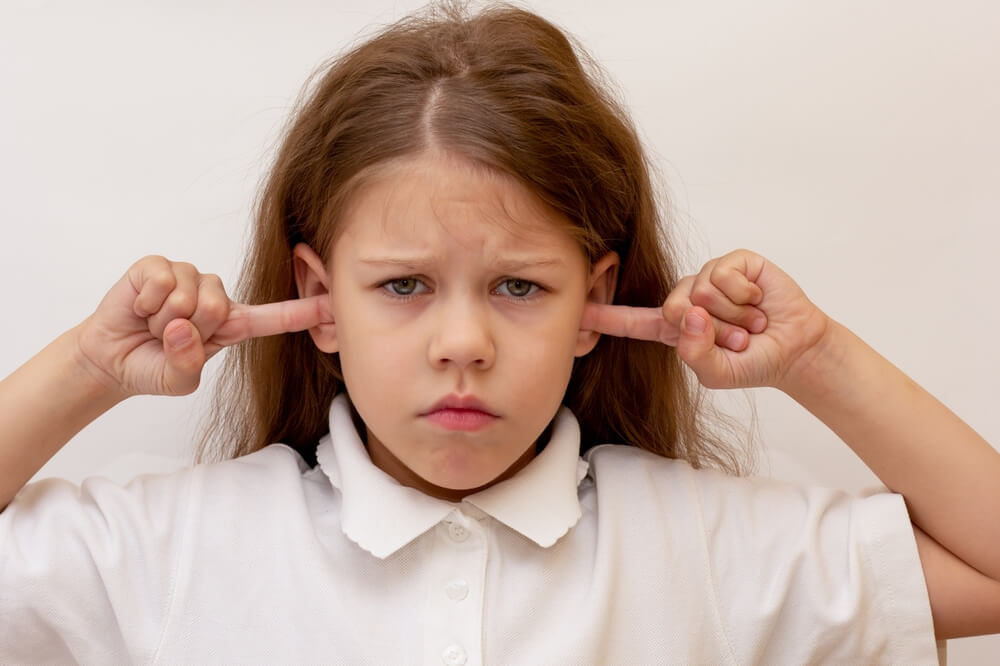
Tatiana Foxy/Shutterstock.com
Here are some common triggers of overstimulation in children:
- Sensory Overload: Excessive noise, bright lights, strong smells, and crowded environments can overwhelm a child’s sensory system, leading to overstimulation.
- Busy Environments: Places with lots of activity, such as shopping malls, amusement parks, or parties, can be overwhelming for children, especially if they are sensitive to crowds or unfamiliar surroundings.
- Electronic Devices: Extended screen time, including smartphones, tablets, computers, and television, can overstimulate a child’s brain and negatively impact their ability to regulate emotions and behavior.
- Lack of Routine: Sudden changes in routine or daily schedule can disrupt a child’s sense of predictability and security, contributing to feelings of stress and overstimulation.
- Emotional Stress: Conflict, tension, or emotional turmoil in the family environment can increase a child’s stress levels, making them more susceptible to overstimulation.
- Physical Fatigue: Overtiredness or lack of adequate rest can lower a child’s tolerance for stimulation, making them more prone to becoming overwhelmed by sensory input.
- High Expectations: Pressure to perform academically, socially, or athletically beyond their capabilities can cause stress and anxiety in children, leading to overstimulation.
- Unstructured Time: While free play is essential for child development, too much unstructured time without clear boundaries or guidance can lead to boredom or restlessness, contributing to overstimulation.
- External Pressure: Pushing children to participate in numerous extracurricular activities or meet unrealistic expectations can lead to burnout and overstimulation.
- Unresolved Sensory Issues: Children with sensory processing disorders may struggle to filter and organize sensory information, making them more susceptible to becoming overwhelmed by their environment.
Understanding these triggers can help parents and caregivers create a supportive environment that minimizes overstimulation and promotes healthy development for children.
Signs of Overstimulation at Each Age
It’s true that each person is unique when it comes to how they react to too much stimulation. Some children might become unusually quiet, while others are so dramatic they make a huge scene.
From a parent’s perspective, it’s critical to monitor your child’s reactions to see when they become overwhelmed due to sensory stimulation. Over time, you’ll get better and start noticing the signs of overstimulation when they are only beginning.
Here are some signs of sensory overload at different ages.
Babies

Lenar Nigmatullin/Shutterstock.com
A newborn might turn their head in another direction, start or exaggerate with the crying volume. If you notice a baby kicking their legs or clenching fists, that could also indicate too much stimulation.
- Excessive crying, especially if it’s persistent and difficult to soothe
- Avoiding eye contact or turning away from stimuli
- Frequent startle reactions or jerky movements
- Difficulty falling asleep or staying asleep for short periods
- Arching the back or stiffening the body in response to stimuli
- Fussiness during feeding, such as pulling away from the breast or bottle
- Clenching fists or displaying tense facial expressions
- Increased breathing rate or irregular breathing patterns
- Skin flushing or paleness, indicating heightened arousal
- Difficulty maintaining focus or tracking objects with the eyes
Toddlers (1–3 years old)

PeopleImages.com – Yuri A/Shutterstock.com
A toddler might cry without any reason, or you’ll notice a refusal to do simple things, such as putting their clothes away as agreed.
- Excessive crying
- Clinginess or seeking comfort
- Difficulty transitioning between activities
- Increased whining or fussiness
- Inability to settle down for naps or bedtime
- Overexcited behavior, such as jumping or running around aimlessly
- Loss of interest in toys or activities
- Avoidance of eye contact
- Thumb-sucking or other self-soothing behaviors
- Regression in previously acquired skills, such as potty training
Preschoolers (3–5 years old)

fizkes/Shutterstock.com
Preschoolers will seem easily upset and might have tantrums like running into their room and slamming the door.
- Tantrums or meltdowns, especially in public settings
- Aggressive behavior towards peers or siblings
- Difficulty following instructions or rules
- Increased defiance or oppositional behavior
- Heightened emotional reactions, such as crying or screaming
- Restlessness or hyperactivity
- Clinginess or separation anxiety
- Changes in eating or sleeping patterns
- Withdrawal from social interactions
- Disinterest in favorite activities or toys
School-age (6–12 years old)
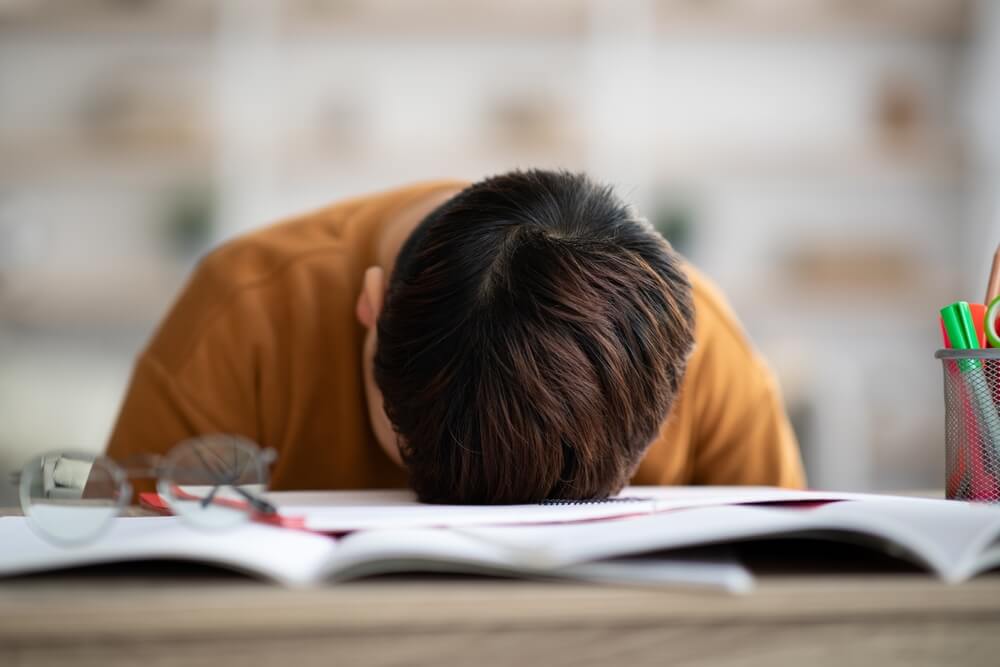
Prostock-studio/Shutterstock.com
Seeming tired or unreasonably aggressive could indicate that an activity caused too many stimuli. Experts advise to look for any behavior that’s not in line with your child’s personality.
- Increased irritability or moodiness
- Fatigue or lack of energy
- Difficulty concentrating on homework or tasks
- Heightened sensitivity to criticism or feedback
- Withdrawal from social activities or hobbies
- Avoidance of crowded or noisy environments
- Changes in appetite or eating habits
- Complaints of physical symptoms like headaches or stomach aches
- Decreased interest in school or extracurricular activities
- Difficulty falling asleep or staying asleep
Be confident in your child’s safety when they are at school or attending other activities. Always know where they are and what’s happening around them with the Findmykids app.
How to Help or Calm Your Overstimulated Child

fizkes/Shutterstock.com
The reason why adults handle stimulation better is the experience. They’ve encountered those situations sufficient times and learned how to react. Children might not have those experiences, or their threshold could be lower.
That’s why the crucial word is understanding. Begin with observing how your child’s brain processes different stimuli. If you know in what situations they are prone to acting out, it will be easier to avoid them. Also, as you try different coping methods, such as taking them out or offering another activity, you’ll discover what works best.
Babies: Dealing with Overstimulation
Noise is the most frequent agitator in newborns. If you notice that sound is the problem, take your baby to a quiet location. Perhaps it’s a visual stimulation, but it’s clear that the kid is overwhelmed. If that’s the case, stop the current activity immediately. You can try walking them around in a stroller or warming them up with a blanket.
For most babies, parents speaking to them can also help them feel calmer. If you find it’s useful, touch your newborn gently or grab their hand. Don’t overdo it since your primary concern is restricting sensations. Focus on securing a calm environment, and even turn off the light if possible.
If you know your kid reacts well to soothing music, play their favorite songs. Also, use a light blanket to keep the newborn warm, but make sure there’s sufficient airflow.
Toddlers and Preschoolers: Dealing with Overstimulation
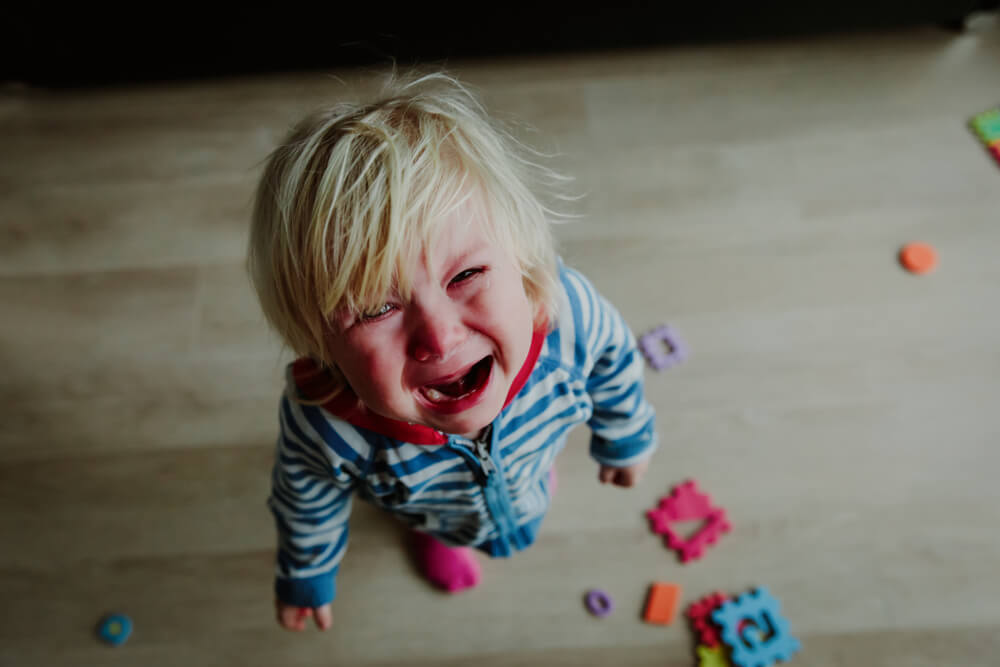
NadyaEugene/Shutterstock.com
Things get a bit trickier with toddlers, and you’ll need to remain patient. They might tempt you to yell or argue, but that will only escalate the matter. If a preschooler is in this state, the odds are they won’t cooperate unless you take a strategic approach.
The first step is to try to identify the stressor and remove it. Remember that any of the five senses could be the target of overstimulation. Perhaps a crowd is what made your child irritated, or it’s the loud TV volume. Your goal is to create a calmer environment, so reducing the noise is the initial move.
Some parents snuggle with their children to offer comfort in these situations. You can read the kid’s favorite book or go into the bedroom to lie down. It’s important to discuss the matter once your kid calms down.
The best approach is to use the available information and try to assume why your child behaved that way. Say something along the lines of “I figured out that the big number of people made you upset,” or” I could say that you didn’t like playing that game with your friends.”
The idea is to learn as much as possible from the experience. Identify the right moment to avoid triggering another bad reaction, and listen to the input they provide. If they are honest, you’ll learn enough to avoid a similar situation in the future.
School-Age Children: Dealing with Overstimulation
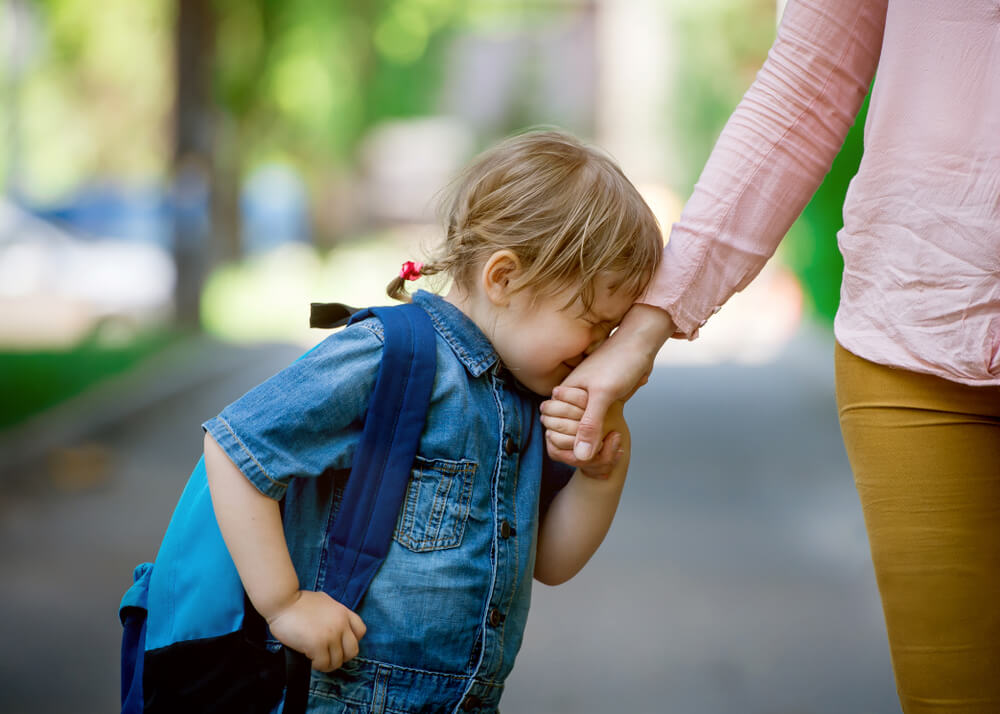
Sharomka/Shutterstock.com
At this point, children understand things better, but they still need your support to deal with the overstimulation symptoms. Let’s say that there’s noticeable irritability present, whether it’s due to a school task or a game. Perhaps your child exhibits visible tiredness since they haven’t slept well last night.
You can suggest your kid go to their room to rest for an hour or two. Try to explain that changing the activity and doing something that calms them down is the right move. For example, suggest reading an interesting book or some music instead of playing a high-paced game that causes overstimulation.
It’s important to keep talking to your child. Once you see they are calmer, look for some input on what happened. Be honest and say that you could have seen in their eyes they were upset, but you aren’t sure about the reason. Some children have a tough time explaining their feelings, so don’t hesitate to navigate them to how they feel and why.
Your kid might have problems managing all the activities in their life. Yes, socializing with friends and spending time with family is important. However, having sufficient time to complete all school tasks and enjoy them on their own is also important for a child. Try to explain that they could benefit from a better organization, which could help them achieve that level or schedule activities.
How to Avoid Overstimulation? Tips for Parents

Prostock-studio/Shutterstock.com
Prevention is the best cure, so the primary focus for parents is to prevent overstimulation from happening. It’s not an easy task, but here are some tips to help children avoid sensory overload:
- Consider potential triggers. Let’s say that the music at that coffeehouse you want to visit is too loud. Perhaps there’s a nasty in a street that’s always on your walking list. Each time you enter the room, assess potential overstimulation triggers. As you get better at understanding your child’s behavior, you’ll learn how to remove triggers before overstimulation happens.
- Identify triggers after they happen. If you tried but couldn’t stop an overstimulated episode, try to identify the trigger. Add it to the existing list and try to act on time for the next occasion.
- Analyze the stuff your child has. Somebody might have bought them a toy that’s extremely noisy and leads to overstimulation. Perhaps a specific item causes a sensory overload, which is something you should remove from their inventory.
- Restrict the use of technology. Parents know that limiting screen time can be imperative to encourage healthy habit development. Technology and screens could lead to sensory overload. While it’s hard to forbid using screens, it’s necessary to take action and limit the kids’ time in front of the screens.
The Kids360 app is the perfect way to optimize your children’s screen time on mobile devices. You can set everything up in a few minutes and limit daily screen time or manage apps that your kids can use. It’s even possible to add chores that could credit your child with extra screen time.
When to Seek Help?
Some overstimulation and “off-course” behavior is normal for children. But it’s one thing to have an episode or two and a whole other to throw tantrums regularly. If you think your child is struggling to cope with stimuli on a regular basis and it affects your daily routine, it could be time to visit a professional.
Begin by visiting a pediatrician who can help understand the situation better. They can tell you if the kid behaves appropriately for their age or if they have a sensitive temperament. A pediatrician could suggest visiting a medical professional to get evaluated for anxiety, ADHD, or related issues. Make sure to understand the meaning of the diagnosis if your child gets one, and don’t hesitate to consult multiple professionals on the best ways to help your kid deal with the issue.
A Process to Understand Your Child
Avoiding overstimulation is not an exact science. It’s a process to understand your child, but as you get better at recognizing the signs, it will help to avoid frequent sensory overload. Most kids respond to visual and audio stimuli, but some kids might have a specific reaction to a taste or smell.
as your child grows older, they will start recognizing the signs and avoid overstimulation themselves. It’s important to offer support in any way possible. Make sure to always talk to your child and help them achieve a balance between downtime and active time. Use the Kids360 app for help! Finding the right amount of stimulation and the activities to include and avoid can boost the child’s quality of life and mental health. Developing these healthy habits can be of crucial importance for the child to understand the importance of balance in life.
FAQs
How Do I Know If My Child Is Overstimulated?
The easiest way is to look for potential overstimulation signs. Your child could become irritable and refuse to cooperate. Overstimulated kids throw tantrums or resort to crying, and some even experience tiredness.
How Do You Calm an Overstimulated Child?
It’s important to create a calmer environment. Remove some stimulants from your kid’s surroundings or limit particular activities. Consider setting a routine you’ll follow each day and take your child outdoors when they are overstimulated at home.
What Does ADHD Overstimulation Feel Like?
ADHD usually manifests by making it difficult to sit calmly, and the person experiences fidgeting and restlessness. Getting uncomfortable or itchy or your clothes becoming too tight is another sign of overstimulation.
What to Do When My Kids Overstimulate Me?
Parents are also subject to overstimulation. If you experience it, a “sensory” break is the best path to take. Consider removing batteries out of children’s toys or slowing the pace of the current activity. If it’s possible, ask the other parent or a friend to take care of your child until you deal with overstimulation.
Cover image: Robert Kneschke/Shutterstock.com
Проверьте электронный ящик














